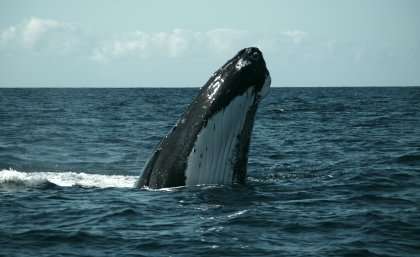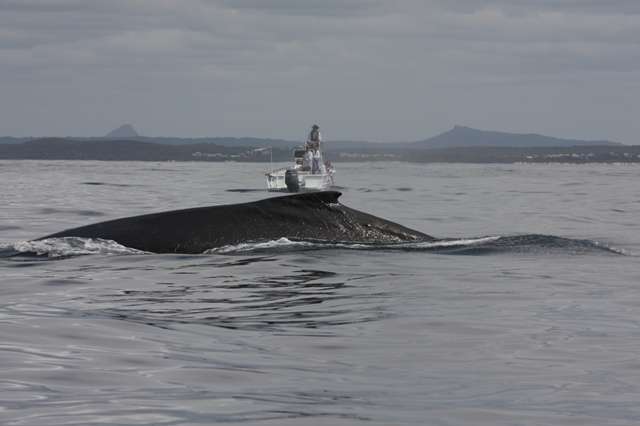Whales turn tail at ocean mining noise

A new international study has measured the effect of loud sounds on migrating humpback whales as concern grows as oceans become noisier.
University of Queensland School of Veterinary Science's Dr Rebecca Dunlop said one of the main sources of ocean noise was oil and gas exploration, due to geologists firing off loud acoustic air guns to probe the structure of the ocean floor in search of fossil fuels.
"The study, titled The Behavioural Response of Humpback whales to Seismic Surveys (BRAHSS), involved an air gun array - as used for oil and gas exploration," Dr Dunlop said.
Associate Professor Michael Noad from UQ's Cetacean Ecology and Acoustics Laboratory (CEAL) was also part of the whale-noise study's international team of researchers from Curtin University, University of St Andrews, Sydney University and Newcastle University.
Dr Dunlop said it was unknown if, and how, the whales would also respond to the presence of the vessel towing the array as well as the array itself.
"It was unclear how humpback whales might react to the airgun sounds and whether the proximity of the disturbance was a concern as well as the received level," she said.
The BRAHSS team investigated the animals' reactions to strings of repetitively firing air guns as they were towed for an hour across the migrating whales' path.

Two teams of volunteer observers on geographically separated Queensland Sunshine Coast beaches tracked the whales' movements before airguns began firing, while guns were going off, and for an hour after. They did a series of 'controls' which measured the response of the whales to the vessel itself.
The BRAHSS team also look at very fine-scale movements and responses using small research vessels which deployed small suction-cup acoustic tags on a few of the whales.
Dr Dunlop said both distance and airgun level were important factors in determining the response, not just received level alone.
"Within a certain distance, they did not show a clear avoidance reaction to the vessel alone, suggesting it was the air guns that triggered this reaction," she said.
The project outcomes can be used to improve current mitigation measures to prevent adverse effects of seismic air gun noise on large whale behaviour.
The study is published in the Journal of Experimental Biology.
More information: Rebecca A. Dunlop et al. Response of humpback whales (Megaptera novaeangliae) to ramp-up of a small experimental air gun array, Marine Pollution Bulletin (2016). DOI: 10.1016/j.marpolbul.2015.12.044
Journal information: Journal of Experimental Biology , Marine Pollution Bulletin
Provided by University of Queensland















